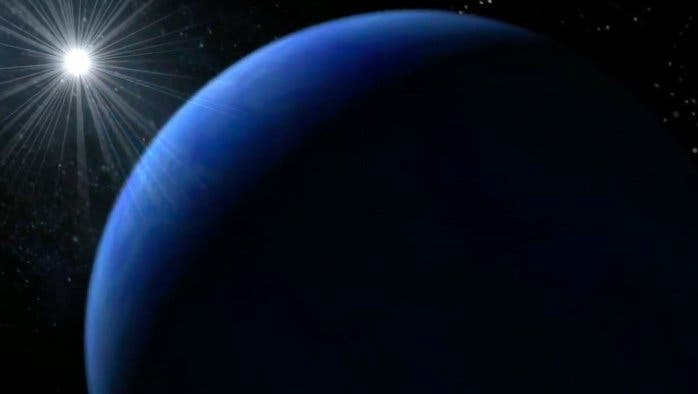
When seen from space, Earth looks like a shiny blue marble due to the fact that it is mainly covered by oceans. However, our planet used to look radically different at various points in its 4.5-billion-year-old geological lifetime. During one such distinct period in its early history, Earth may have been entirely covered in water, a real-life “Waterworld” that could have been very similar to the world portrayed in Kevin Costner’s infamous film.

Researchers at the University of Colorado at Boulder led by Benjamin Johnson, who is now a faculty member at Iowa State, searched for clues about Earth’s ancient geochemical past by excavating samples from the Panorama district, a site located deep in Northwestern Australia’s outback.
“The area at Panorama is just a spectacular section. There are beautiful pillow basalts and cherts that were deposited on the ocean floor. The processes and patterns of ancient hydrothermal activity are exposed in a wonderful cross-section,” Johnson told ZME Science.
The reason why Panorama is so interesting is that it’s essentially a 3.2-billion-year-old chunk of ocean crust that’s been turned on its side, providing a unique opportunity to study the planet’s ancient geology. During a single day of trekking, you can walk across the entire crust, from the base to the surface, where water once bubbled through hydrothermal vents.
It also holds telltale clues about the chemistry of ocean water from billions of years ago — the kind of information that is still etched in the rocks at Panorama.
Johnson and colleagues say that their process looks a lot like analyzing used coffee grounds to understand what the water that poured through it looked like.
The researchers used an inverse model to analyze data from more than 100 samples collected across the dry terrain. Specifically, the scientists looked at two different isotopes of oxygen: the slightly heavier Oxygen-18 and the lighter variety called Oxygen-16.
“Constructing the inverse model was a challenge! There’s a fair amount that goes into making sure the data is processed correctly, and to make sure we’re considering mass balance,” Johnson said.
According to the results, the ratio of the two isotopes suggests that about 3.2 billion years ago there was a smidge more Oxygen-18 atoms that we see today.
Today’s continents are covered by clay-rich soils that love to soak heavier oxygen isotopes from the water. As it turns out, the only viable explanation for the excess of Oxygen-18 is that around that time, there simply weren’t any soil-rich continents.
“One way to explain this value is to have the Earth covered in ocean, with no continents above sea level. Today, weathering and formation of soils and clays preferentially takes oxygen-18 and stores it in the continents. If this wasn’t happening, oxygen-18 that otherwise goes into soils stays in the ocean, producing an ocean higher in oxygen-18,” Johnson wrote in an e-mail.
That being said, this scenario doesn’t necessarily mean that early Earth was completely devoid of land. Even in this ‘water world’ hypothesis, it is very likely that there were still some spots of dry land sticking out of the oceans.
However, like most other exciting and unexpected findings, the study also seems to raise more questions than it answers. For instance, if Earth truly was a water world, what happened to its plate tectonics? When did plate tectonics finally push rock that would eventually become today’s continents?
Johnson and colleagues don’t know yet, but they plan on performing more investigations on similarly aged rocks found in other parts of the world.
“We could test these results by finding similar areas of crust to apply our inverse model. There are similarly aged rocks in other parts of Australia and South Africa, so the potential exists! One aspect of this work that is interesting is that it predicts a distinct trend for ocean oxygen isotopes through time than the sedimentary record does. Our work suggests it decreased through time, while sedimentary rocks record an increase. We don’t have an answer for this discrepancy!” the researcher said.
This isn’t the first study that found evidence of a global ocean in Earth’s geological past. In 2017, researchers at the Australian National University analyzed zircon mineral grains found in the oldest rocks ever found. The study concluded that during Earth’s first 700 million years or so, there were no mountains and continental collisions. These findings fit well with the so-called “Cool Early Earth” theory that says that our planet’s early history was marked by a long period of cool and quiet, only to be followed by very extreme conditions such as 300 million years of comet and asteroid bombardments.
“I think the biggest points of interest from this work for the public are that the image of a water world is evocative, and that even though we don’t have any samples of 3.2 billion-year-old seawater, there are rocks that interacted with that ocean that record its composition. A water-world also has implications for early life and evolution. If there are no continents, there are no niches or ecosystems on land, and all the earliest history of life is marine only,” Johnson said.
The findings appeared on March 2 in the journal Nature Geoscience.


